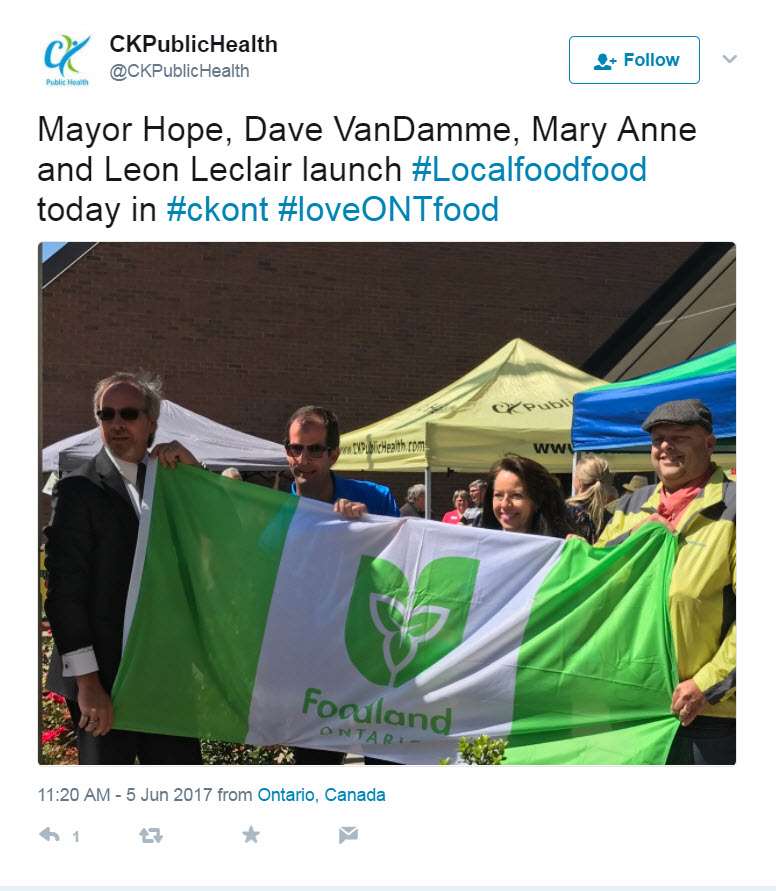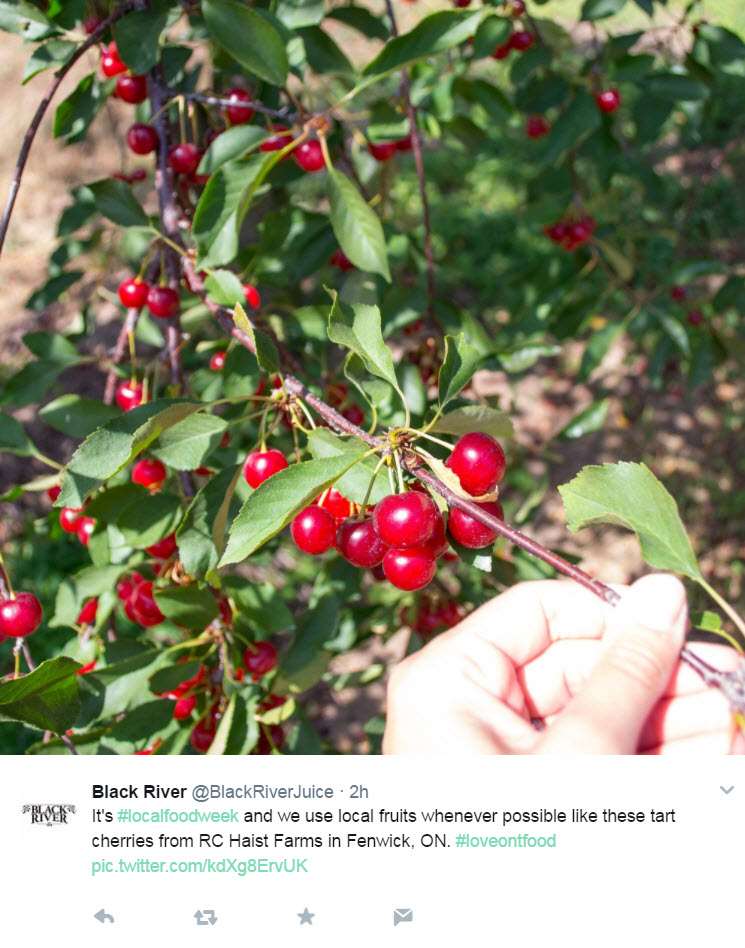The first week of June was proclaimed Local Food Week in 2013
By Diego Flammini
Assistant Editor, North American Content
Farms.com
From June 5 to 11, locally produced food will be in the spotlight as part of Local Food Week celebrations.
And a new OMAFRA initiative is aimed at promoting more Ontario-grown products across the province.
Bring Home the World uses Ontario’s demographics as inspiration to bring more local food to family dinner tables.
“Ontario has the most culturally diverse population in Canada – we have roots in more than 200 countries around the world and grow more than 200 diverse foods right here in Ontario,” Ontario Minister of Agriculture Jeff Leal said in a June 5 release. “I encourage everyone to get involved and share your views on what World Foods means to you.”
Local Food Week wouldn't be possible without Ontario's agriculture community.
There are 49,600 farms and 70,470 farmers in Ontario as of the 2016 Census of Agriculture. Other stats include:
- 12,348,463 acres of farmland across the province,
- The average farm size is 249 acres,
- 311,960 dairy cows and 236,253 beef cows call Ontario home, and
- The total capital value of agriculture in the province is $131,785,355,000.
Globally, Ontario’s agri-food exports have increased each year from $8.9 billion in 2009, to $14.8 billion in 2016.
Grains continue to be Ontario’s largest export, accounting for $3,389,000,000 in 2016.
REGIONAL HIGHLIGHTS
Region | Counties | Highlights |
Central | Durham, Haliburton, Hastings, Kawartha Lakes, Muskoka, Northumberland, Parry Sound, Peterborough, Prince Edward, York. | - 7,817 farms (15% of provincial total)
- 717,760 hectares of farmland
- 165,250 hectares used for hay
- 459 dairy farms
- 1,457 beef cattle farms,
- 1,141 oilseed and grain farms
|
Eastern | Stormont, Dundas and Glengarry, Frontenac, Leeds and Grenville, Lanark, Lennox and Addington, Ottawa, Prescott and Russell, Renfrew. | - 8,007 farms (15% of provincial total)
- 912,832 hectares of farmland
- 213,236 hectares used for hay
- 1,065 dairy farms
- 1,322 beef farms
- 1,501 oilseed and grain farms
|
Western | Bruce, Dufferin, Grey, Halton, Huron, Peel, Perth, Simcoe, Waterloo, Wellington | - 16,771 farms (32% of provincial total
- 1,571,145 hectares of farmland
- 273,978 hectares dedicated to soybeans
- 3,096 beef farms
- 4,433 oilseed and grain farms
- 1,605 dairy farms
|
Southern | Brant, Chatham-Kent, Elgin, Essex, Haldimand-Norfolk, Hamilton, Lambton, Middlesex, Niagara, Oxford | - 17,094 farms (32% of provincial total)
- 1,549,113 hectares of farmland
- 507,072 hectares used for soybeans
- 8,628 grain and oilseed farms
- 776 dairy farms
- 750 beef farms
|
Northern | Algoma, Cochrane, Kenora, Manitoulin, Nipissing, Rainy River, Sudbury, Greater Sudbury, Thunder Bay, Timiskaming | - 2,261 farms (4% of provincial total)
- 374,803 hectares of farmland
- 98,099 used for hay
- 480 beef farms
- 115 oilseed and grain farms
- 131 dairy farms
|
Ontarians are taking to social media to show their appreciation for locally produced food.



Follow Local Food Week on social media by using the hashtags #LoveONTFood and #LocalFoodWeek.
The first week of June was proclaimed Local Food Week as part of 2013’s Local Food Act.